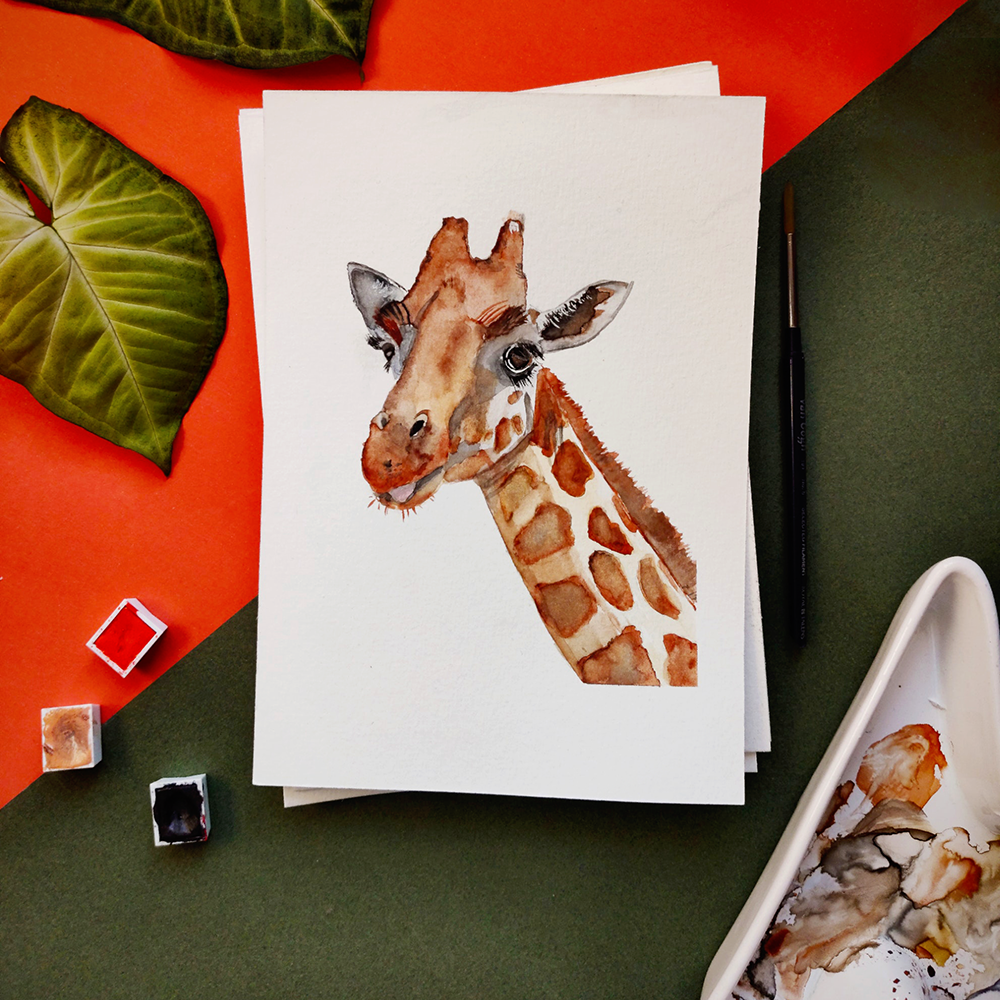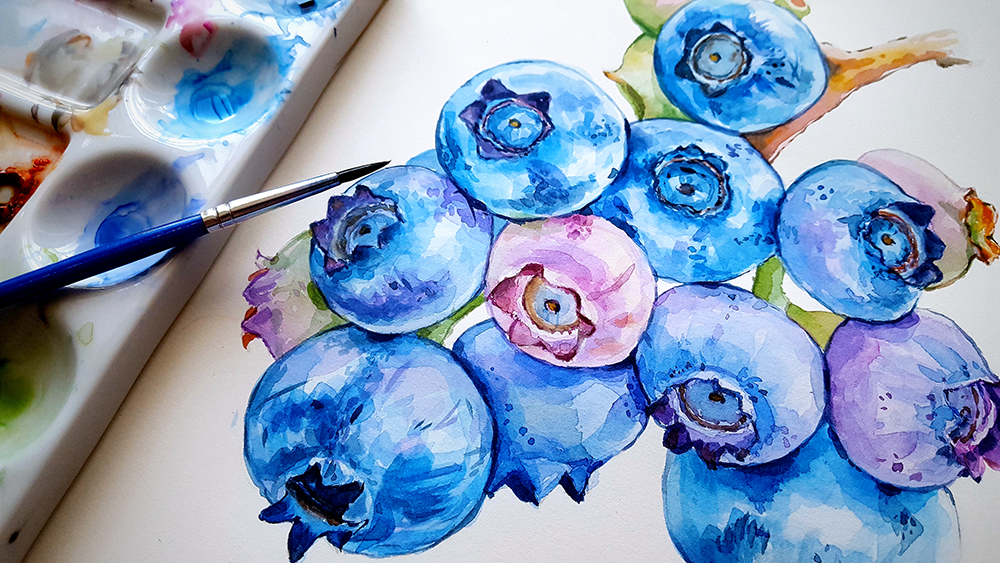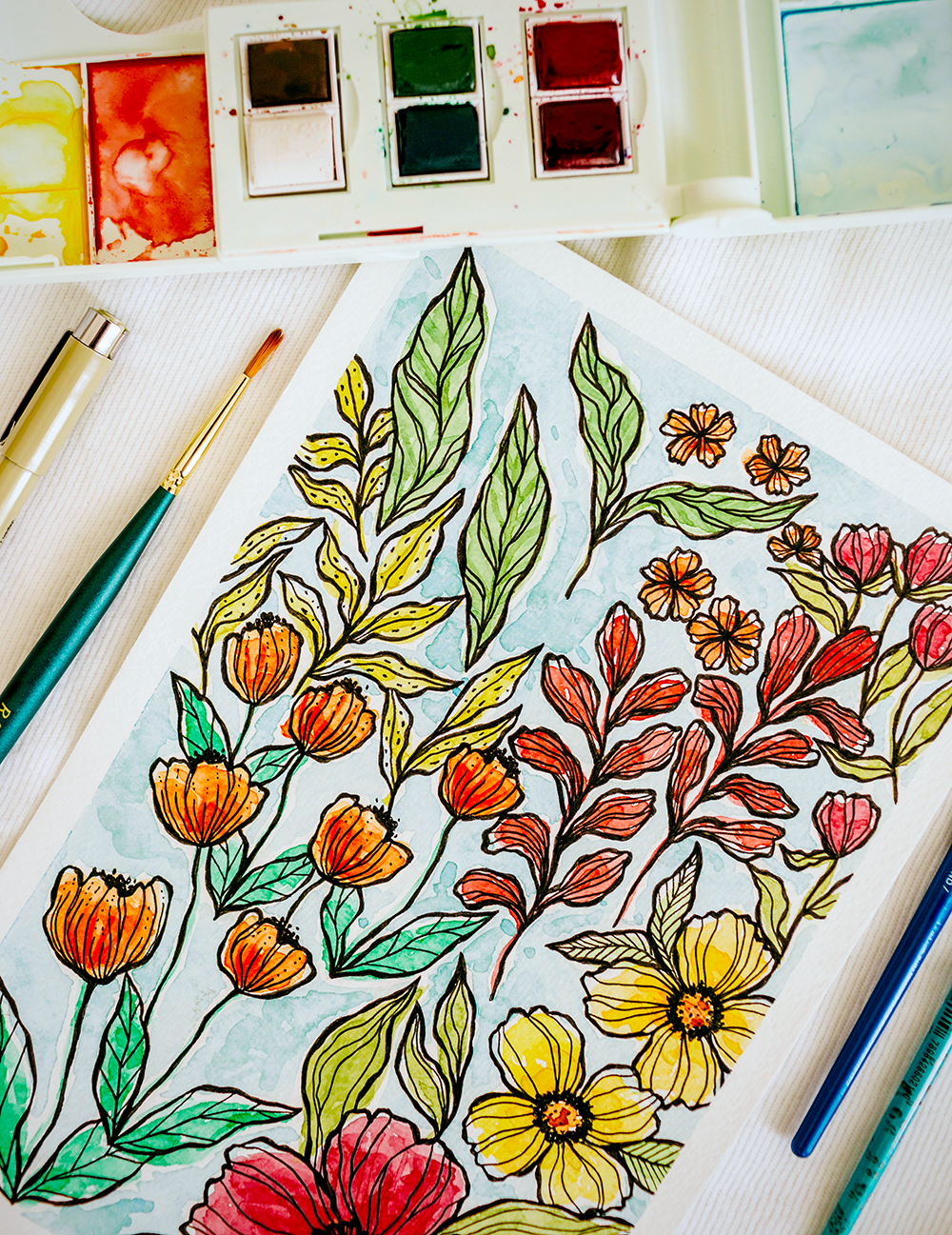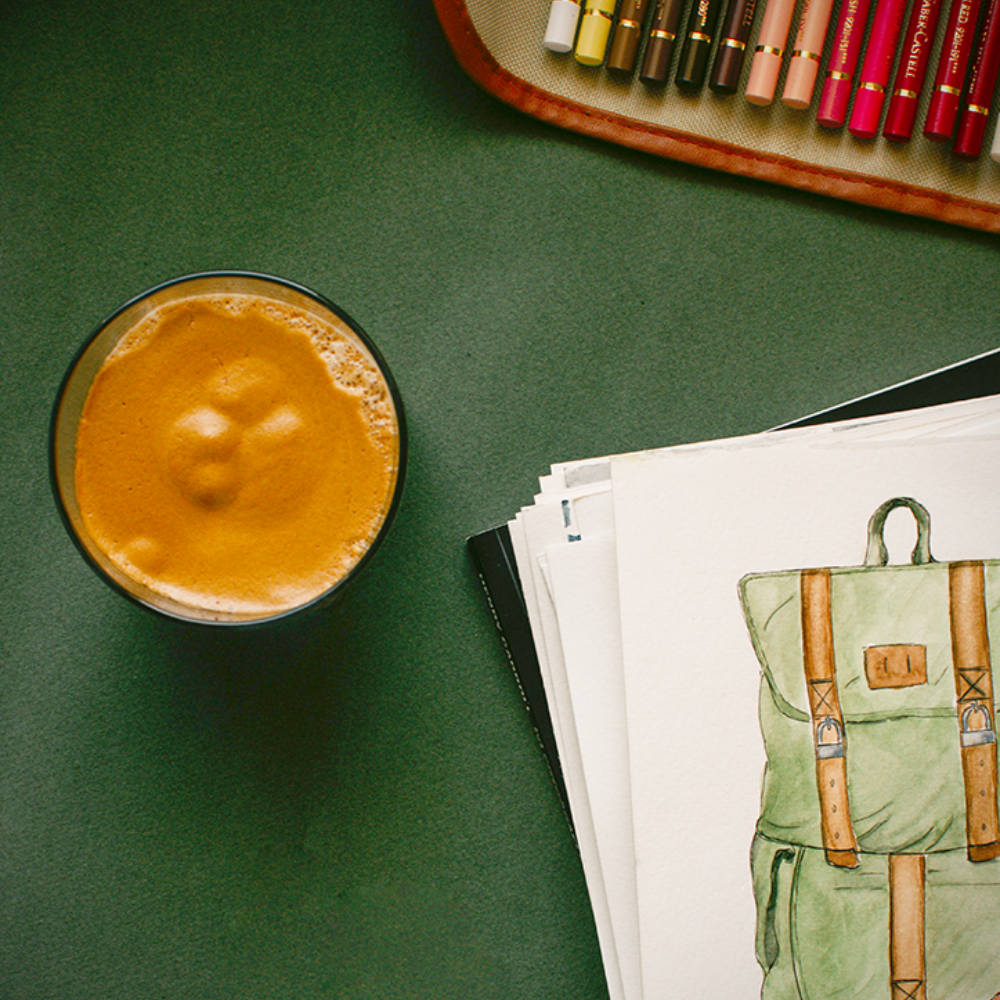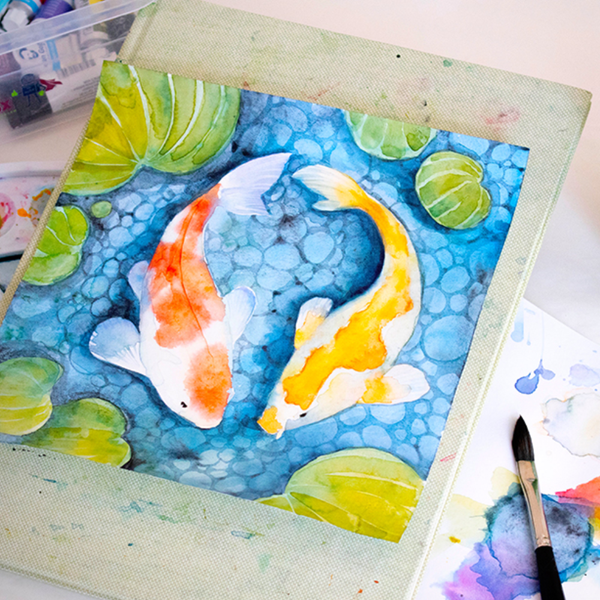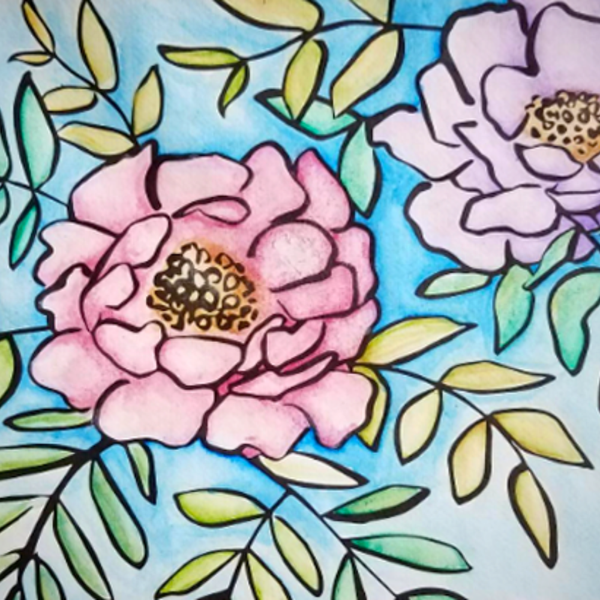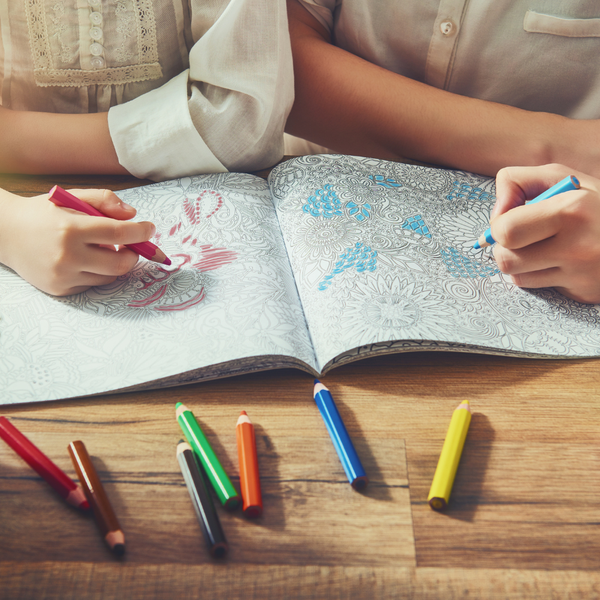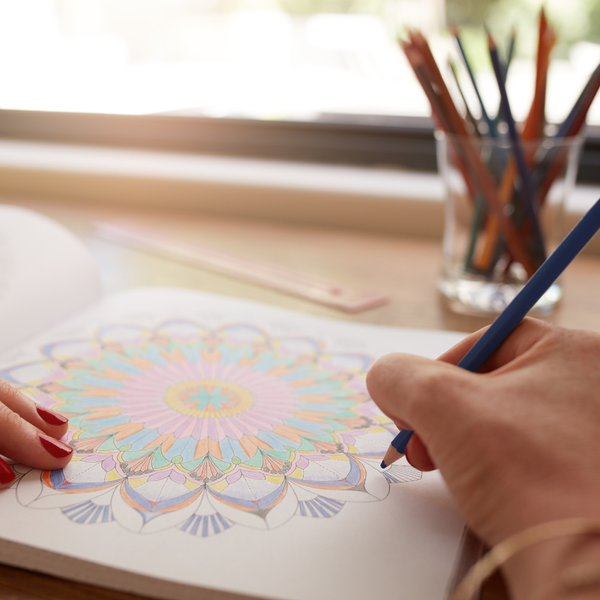Gone are the days when coloring books were just a child's play.
Today, they stand as a canvas for creativity and relaxation for adults, adorned with complex patterns and a spectrum of themes waiting to be brought to life.
As the adult coloring book craze continues to flourish, so does the quest for the perfect art medium.
Enter watercolor pencils, a hybrid tool promising the precision of colored pencils with the ethereal blendability of watercolors.
But are watercolor pencils good for coloring books?
Do they truly live up to the hype when it comes to coloring books?
This comprehensive analysis will explore the effectiveness of watercolor pencils in the realm of adult coloring, juxtaposing them with their traditional counterparts and offering insights into mastering their use.
Let's explore this fun medium!
Key Takeaways:
- Watercolor pencils offer a unique blend of drawing and painting, suitable for both novice and experienced artists.
- They can elevate the coloring book experience by allowing for intricate detail and the addition of watercolor effects.
- Quality varies among brands, and artist-grade pencils are recommended for the best results in coloring books.


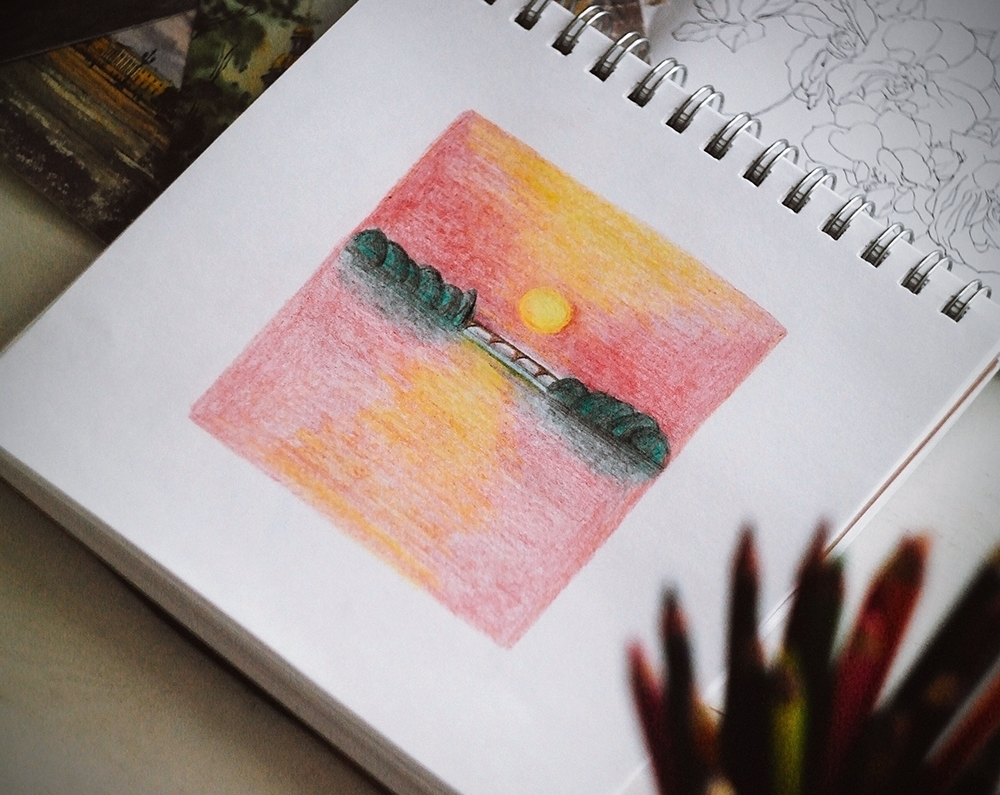
Basics of Watercolor Pencils
Watercolor pencils are a versatile art supply that combines the precision of colored pencils with the fluidity and blendability of watercolors.
They are designed with a water-soluble binder that allows the pigment to be manipulated with a wet brush after application.
This unique feature opens up a world of possibilities for coloring pages, allowing artists to achieve both detailed lines and painterly effects within the same piece.
Unlike regular colored pencils, which have a wax or oil base, watercolor pencils can create effects that mimic traditional watercolor painting.
When you add water to the pigment laid down by the pencils, the colors can blend beautifully, creating smooth transitions and gorgeous colors that can make your artwork pop.
Choosing the Right Paper
One of the most crucial factors in using watercolor pencils effectively is the choice of paper.
Watercolor paper is specifically designed to handle moisture without warping or deteriorating.
It's a bit pricey compared to regular paper, but the investment can make a huge difference in the outcome of your artwork.
Coloring books made with watercolor paper are ideal for those who wish to use watercolor pencils, as they can withstand the addition of water without bleeding through or puckering.
For those coloring books that are not printed on watercolor paper, it's still possible to use watercolor pencils dry, much like regular colored pencils.
However, the true potential of these pencils is unleashed when they are activated with water, so for the best experience, seek out coloring books with the appropriate paper.
Pros of Watercolor Pencils in Coloring Books
Watercolor pencils can be a great idea for coloring books due to their versatility.
They allow for a color range that can be expanded by simply adding water.
This means that with just a few pencils, artists can achieve a multitude of different colors and effects.
Additionally, the ability to apply light layers and build up color gradually helps in creating depth and intensity in the artwork.
Another advantage is the fine point that watercolor pencils can maintain, which is perfect for the intricate designs often found in adult coloring books.
This fine point allows for precision in coloring small areas, which might be challenging with regular watercolors or markers.
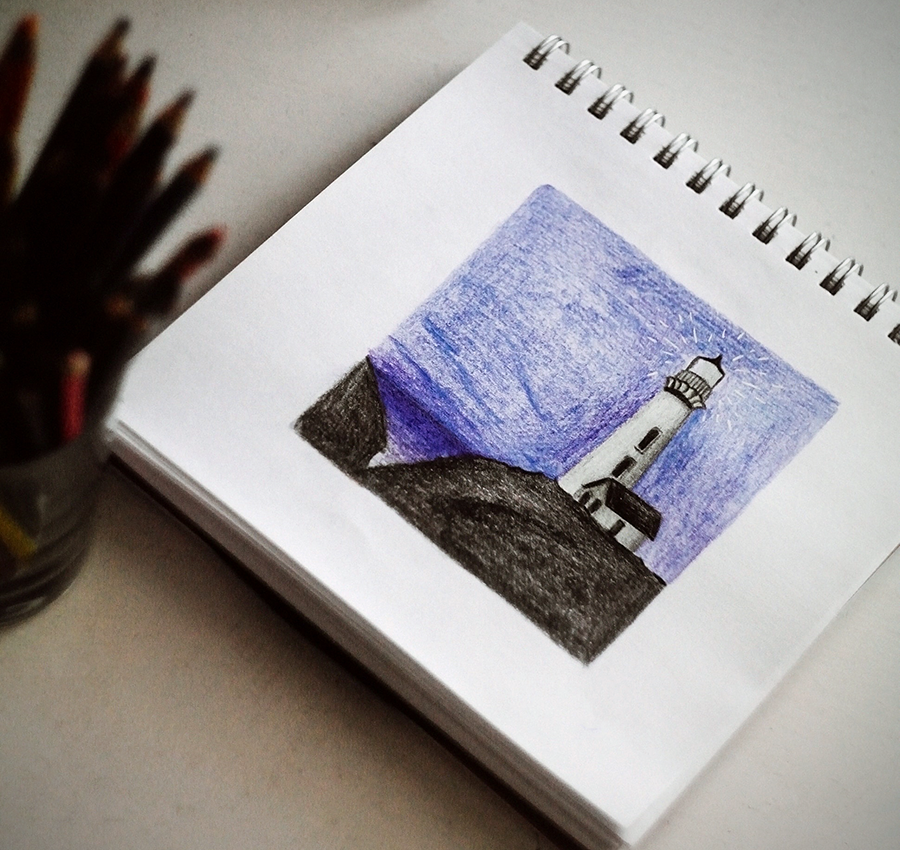

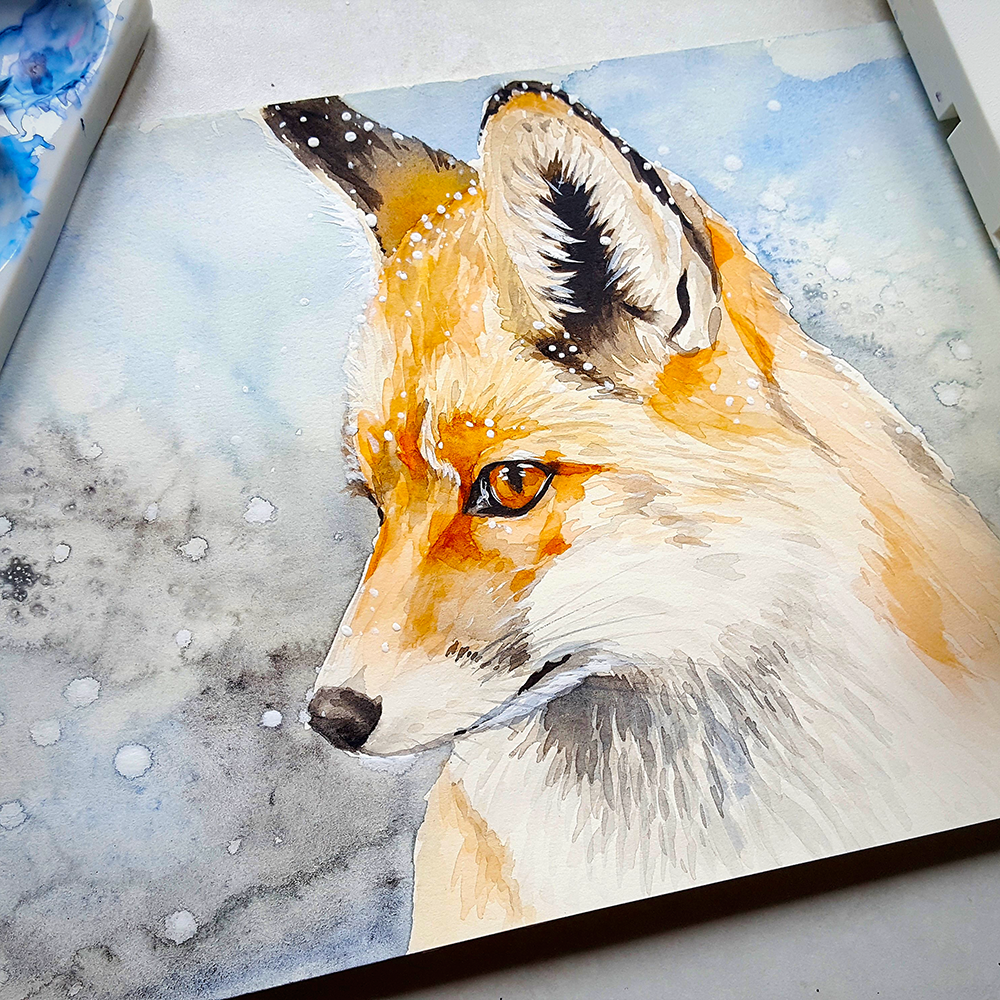
Techniques for Using Watercolor Pencils
To get the most out of watercolor pencils in coloring books, it's important to master a few basic techniques.
One popular method is to lay down color with the pencils and then go over it with a wet brush to blend the pigment.
This can create a smooth, painted look.
For more control over the blending process, a water brush can be used, which allows for the addition of water directly from the brush's reservoir.
Another technique is to dip the tip of the pencil in water before drawing.
This will produce intense colors and a softer line, similar to a watercolor wash.
Experimenting with different levels of pressure and water application can yield a variety of textures and effects, making watercolor pencils a flexible tool for craft ideas and art projects.
Blending and Layering Techniques
Blending is a key aspect of working with watercolor pencils.
By using a wet brush, artists can blend colors together to create smooth transitions or new colors.
Layering is another technique that can be used to build up color intensity and depth.
By applying light layers of color and gradually building them up, artists can achieve a rich, complex look in their coloring pages.
Selecting the Best Pencils for Your Artwork
When it comes to selecting the best pencils for coloring books, artist-grade pencils are generally recommended.
These pencils have a higher pigment concentration, which results in more vibrant and intense colors.
Brands like Caran d'Ache and Prismacolor offer artist-quality watercolor pencils that are known for their color selection and ability to blend nicely.
While artist-grade pencils can be a bit pricey, they are often worth the investment for those serious about their coloring.
The pencils' soft core allows for easy layering and blending, and the quality of the pigment means that the colors remain bright and clear when water is added.
Durability and Quality of Artist Grade Pencils
Watercolor pencils, particularly those of artist grade, are renowned for their durability and quality.
Unlike standard colored pencils, artist quality watercolor pencils are crafted with superior pigments and binders, ensuring that the color transfers smoothly onto the paper with a rich and vibrant finish.
Most brands, including premium names like Caran d'Ache, offer watercolor pencils that resist breakage, which is a common issue with lower quality options.
This resilience is particularly beneficial when sharpening, as broken pencils can interrupt the flow of creativity and lead to frustration, especially for avid artists.
Artist grade pencils are also designed to withstand the blending and layering processes inherent to watercolor pencil techniques.
The core of these pencils, often oil based, allows for a seamless integration of colors, creating a paint-like effect that is both stunning and unique.
The investment in artist quality pencils is reflected in the longevity of the artwork produced, as the pigments are formulated to resist fading over time.
For those who draw, ink, or paint with a passion for enduring art, the price of artist grade watercolor pencils is justified by their exceptional performance and lasting results.
Impact of Wood Quality on Watercolor Pencils
The wood used in the construction of watercolor pencils plays a crucial role in their performance and longevity.
High-quality wood ensures that the pencil is durable and can be sharpened to a fine point without breaking.
Caran d'Ache, a renowned brand in the art world, is known for using premium cedar wood in their pencils, which not only provides a comfortable grip but also allows for smooth sharpening.
The best colored pencils often boast wood that resists splintering, ensuring that the artist can maintain precision in their work without interruption.
In addition to durability, the type of wood can affect the blending capabilities of the watercolor pigment.
Softer woods tend to allow for a more seamless blend when water is applied, as they do not impede the transfer of pigment onto the paper.
This is particularly important for artists who employ techniques that require multiple layers of color to be blended.
The wood quality can either enhance or detract from the overall water color effect, making it a significant factor to consider when selecting the best colored pencils for any coloring book or art project.



Sharpening Techniques for Watercolor Pencils
Sharpening watercolor pencils requires a gentle touch and the right tools to prevent the soft, water-soluble leads from breaking.
A sharp pencil is essential for detailed work, and artists often prefer hand-held sharpeners with high-quality blades that can create a fine point without exerting too much pressure on the pencil.
When sharpening, it is advisable to rotate the pencil against the blade, rather than the other way around, to achieve an even sharpening and to preserve the integrity of the wood casing.
For those using watercolor pencils, such as the Caran d'Ache range, maintaining a sharp point can make all the difference in the application of fine details and crisp lines.
However, it's also important to have a slightly blunt tip for broader strokes and when applying a wash of water color.
Therefore, artists should have a strategy for sharpening that aligns with their intended use.
Whether the goal is to create finely detailed artwork or to produce soft, blended effects, mastering the sharpening technique is a key skill for any watercolor pencil enthusiast.
Crafting Detailed Art with Precision Sharpening Techniques
Achieving detailed artwork in coloring books often requires a finely sharpened pencil.
Precision sharpening techniques are essential for Caran d'Ache watercolor pencils to maintain their performance and deliver intricate details.
Artists should consider using a hand-held sharpener with a replaceable blade to ensure a consistently sharp point.
This practice not only preserves the pencils' longevity but also allows for the creation of fine lines and textures that elevate the artistry of coloring book pages.
Furthermore, the correct sharpening angle plays a pivotal role in the control and durability of the pencil tip.
A more acute angle will result in a sharper point, ideal for detailed work, while a slightly blunter angle can provide a stronger tip for broader strokes.
It's important to find a balance that suits the artist's technique and the paper's texture.
By mastering sharpening methods, users of Caran d'Ache watercolor pencils can fully exploit the potential of their coloring tools, resulting in stunning, detailed imagery.
Quality Performance with Watercolor Pencils
When it comes to watercolor pencils, the quality of the product can significantly impact the artist's experience and the final outcome of their work.
Caran d'Ache watercolor pencils are renowned for their superior quality, offering a rich, vibrant color palette and exceptional solubility that allows for smooth transitions and gradients.
These pencils are crafted with fine, durable leads that resist breakage, ensuring that artists can apply pressure without fear of snapping the tip, which is essential for both fine detailing and broader color sweeps.
Moreover, Caran d'Ache pencils are designed with lightfast pigments, ensuring that the artwork retains its brilliance over time.
This is particularly important for artists who sell or exhibit their work, as it guarantees the longevity of their pieces.
The brand's commitment to quality materials means that the pencils can be sharpened to a fine point for intricate work, and they blend seamlessly when water is applied, making them a top choice for professionals and enthusiasts alike who seek to elevate their coloring book creations.
Maximizing Color Intensity: Caran d'Ache Watercolor Pencils
Caran d'Ache watercolor pencils are renowned for their exceptional quality and ability to produce vibrant, intense colors.
When working on a coloring book, the pigment concentration in these pencils allows for a rich application that stands out on the page.
By applying a light touch, artists can create delicate shades, or they can increase pressure for deeper hues.
The versatility of Caran d'Ache pencils makes them suitable for both beginners and professionals seeking to add a splash of intensity to their artwork.
To sharpen Caran d'Ache watercolor pencils effectively, it is crucial to use a sharpener that is specifically designed for softer pencil leads.
A gentle twist is all that is needed to achieve a fine point without causing breakage.
Maintaining a sharp tip ensures precision in coloring intricate designs and contributes to the overall neatness of the work.
Regular sharpening also helps in layering colors, which is a technique often used to build up color depth and complexity in watercolor pencil art.
Creative Possibilities with Caran d'Ache Watercolor Pencils
Caran d'Ache watercolor pencils open up a world of creative possibilities for coloring book enthusiasts and artists.
Their versatility allows for a range of techniques, from dry pencil work that can be later transformed with a wet brush to pre-wetting the paper for intense, paint-like effects.
Artists can experiment with sgraffito, where they scratch off layers of color to reveal the paper or underlying hues, or they can use the pencils to add fine details to a watercolor wash, combining the precision of pencil work with the fluidity of watercolors.
The pencils' ability to mimic the effects of traditional watercolors makes them ideal for adding depth and texture to illustrations.
For example, an artist can create a soft background using a wash technique, then use the pencils dry to overlay sharp, detailed lines, giving the impression of foliage or fabric texture.
Caran d'Ache's range of colors also allows for subtle shading and tonal work, which can bring a coloring book page to life with a three-dimensional feel that is both captivating and professional.
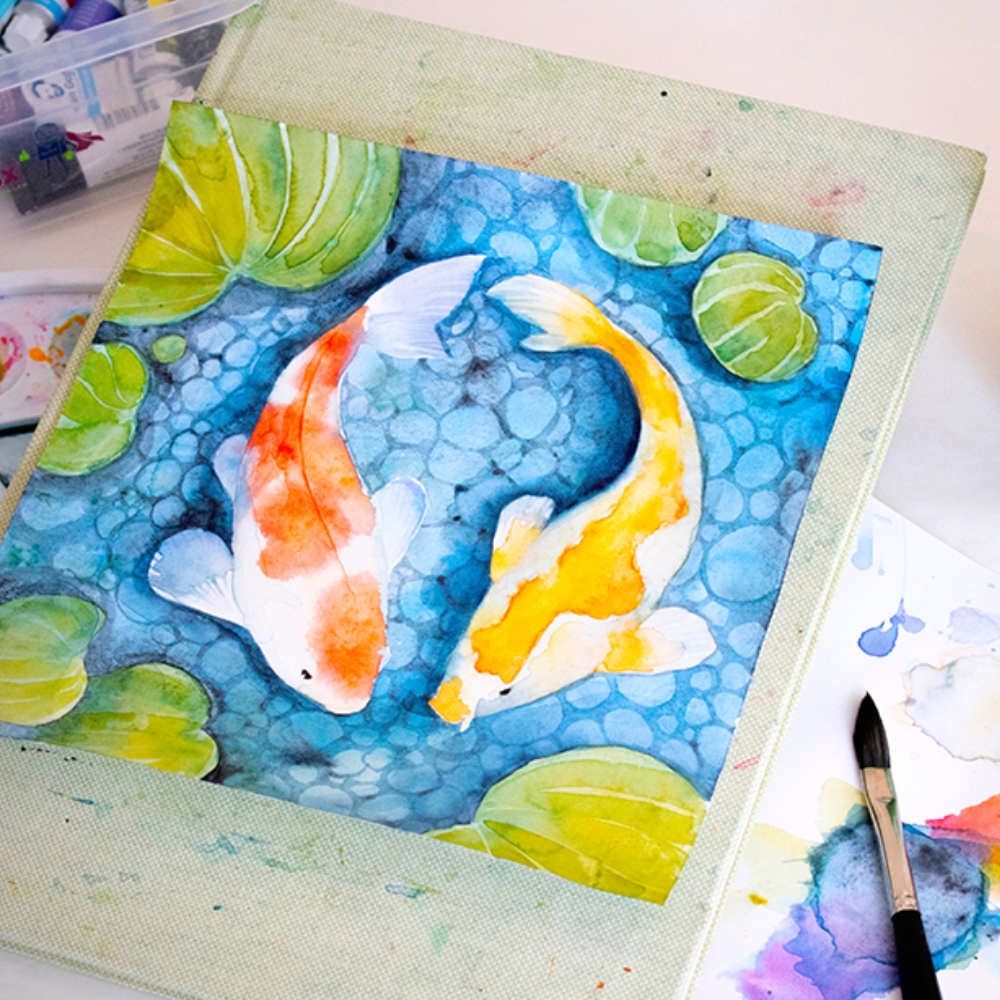
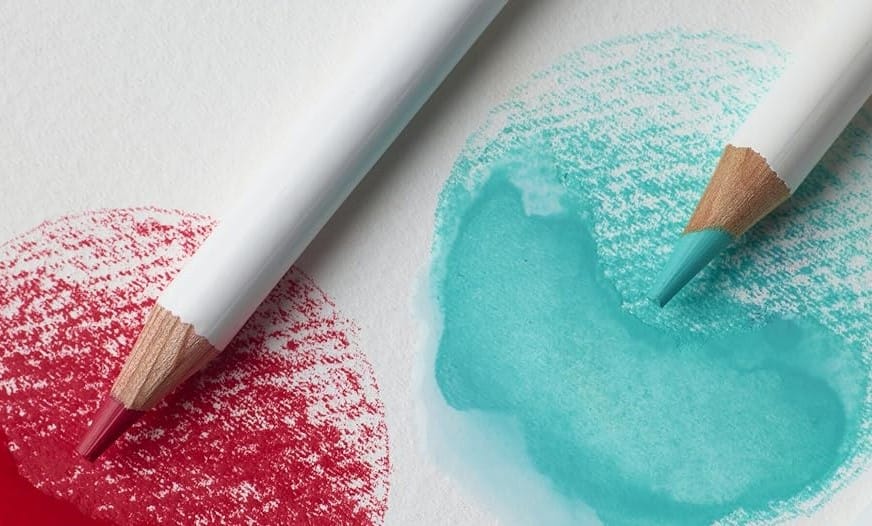
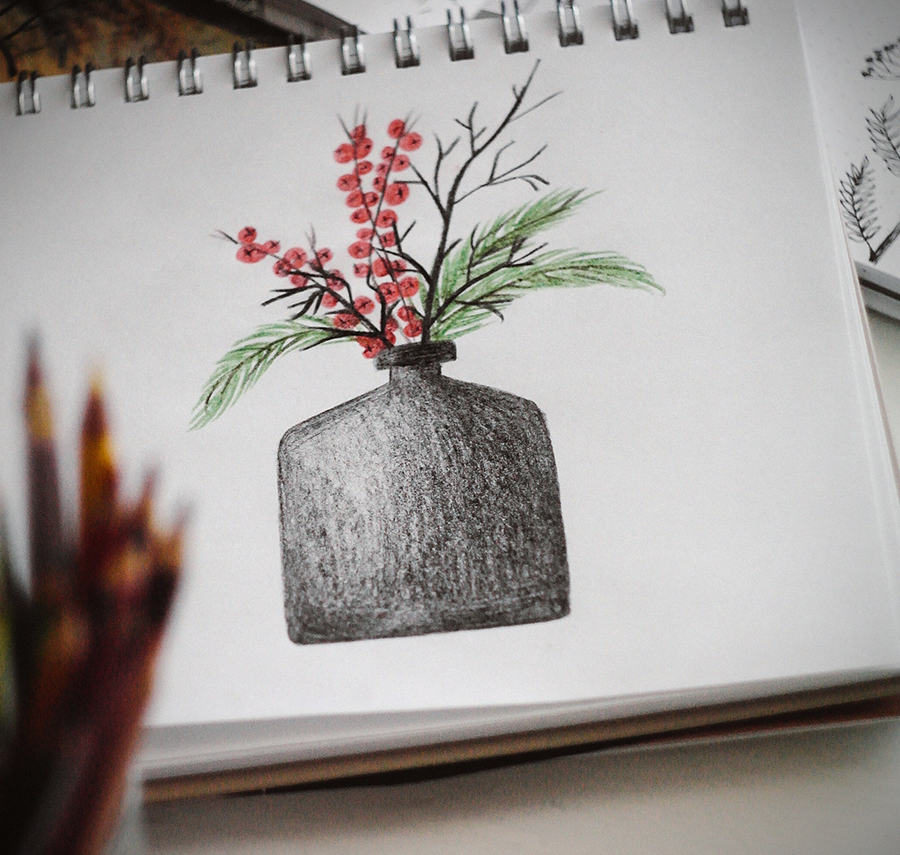
Incorporating Watercolor Pencils into Crafts
Watercolor pencils are not just for professional artists; they are a fantastic addition to kids' craft supplies.
The versatility of watercolor pencils makes them a fun and engaging medium for children to explore their creativity.
With the ability to draw fine lines or blend colors with water for a paint-like effect, kids can transition from drawing to painting without the need for separate craft supplies.
This dual functionality not only saves space and money but also introduces children to the basics of both drawing and watercolor painting in a single art supply.
Moreover, the ease of use and clean-up associated with watercolor pencils make them a preferred choice for parents and educators.
Most brands offer sets that are non-toxic and safe for children, ensuring that the fun of crafting is not marred by safety concerns.
Whether used in an art supply store workshop or a home craft project, watercolor pencils can help children develop their fine motor skills and artistic expression.
The joy of watching a simple drawing come to life with a touch of water is a delightful experience for kids, making watercolor pencils a staple in the realm of educational and entertaining crafts.
Preventing Common Issues
One of the challenges of using watercolor pencils is preventing the pencil from breaking.
A quality pencil sharpener is essential to maintain a fine point without causing the soft core to break.
Additionally, when applying water, it's important to use a light touch to avoid damaging the paper or causing the colors to bleed outside the lines.
For those who want to preserve their artwork, a workable fixative can be applied to the finished piece.
This will help to set the pigment and prevent it from reactivating if it comes into contact with moisture again.
Role of Watercolor Pencils in Craft Projects
Watercolor pencils are not just for coloring books; they can also be a valuable addition to other craft projects.
They can be used to add color to handmade cards, scrapbook pages, and even small paintings.
Their ability to blend nicely and produce gorgeous colors makes them a popular choice among crafters looking for high-quality art supplies.
Comparing Watercolor Pencils to Other Media
When compared to other coloring media such as regular colored pencils, markers, or even regular watercolors, watercolor pencils offer a unique middle ground.
They provide the control and precision of pencils with the blendability and fluidity of watercolors.
This makes them particularly suitable for those who enjoy the detail of pencil work but also appreciate the artistic effects that can be achieved with water-based media.
Tips for Storing & Caring for Watercolor Pencils
Proper storage is important to extend the life of your watercolor pencils.
A sturdy pencil case or metal box can protect the pencils from damage and keep them organized.
It's also advisable to keep them away from extreme temperatures and direct sunlight, which can affect the wax core and pigment.
Where to Purchase Watercolor Pencils
Watercolor pencils can be found at most art supply stores, both brick-and-mortar and online.
When purchasing, it's a good idea to look for sets that offer a wide color range.
Some brands offer two sets for different skill levels: one for beginners and another for more advanced artists.
This allows individuals to choose pencils that match their experience and needs.


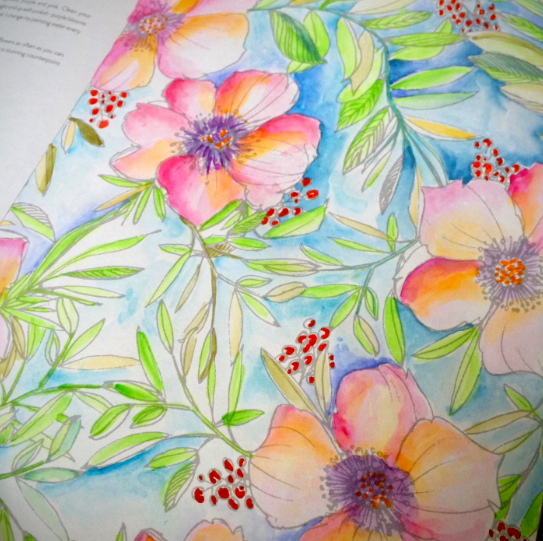
Unleash Your Creativity with Watercolor Pencils
Watercolor pencils stand out as a superior choice for those looking to elevate their coloring book experience, offering the precision of colored pencils with the added benefit of watercolor effects.
They merge the meticulous control of colored pencils with the mesmerizing, fluid effects of watercolors, offering an unparalleled medium for artistic expression.
They work best on watercolor paper and can significantly enhance the coloring experience with their ability to blend beautifully and create intense colors.
Opting for artist-grade pencils will unlock the full potential of your creations, thanks to their exceptional pigment quality and blendability.
Whether you're a seasoned coloring aficionado or a crafting newbie, mastering the use of watercolor pencils can transform your artistic endeavors, making every page a masterpiece waiting to happen.
Embrace the vibrant world of watercolor pencils and watch as your artistry blossoms on the canvas of your coloring books.

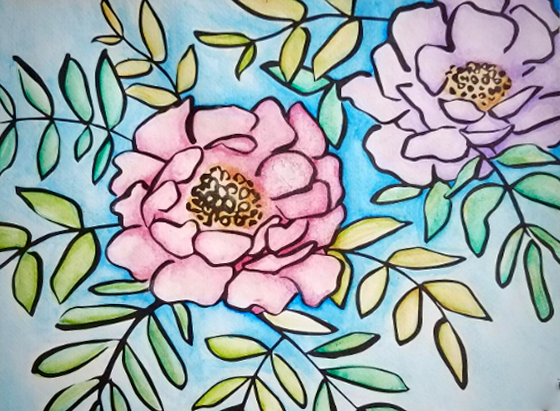
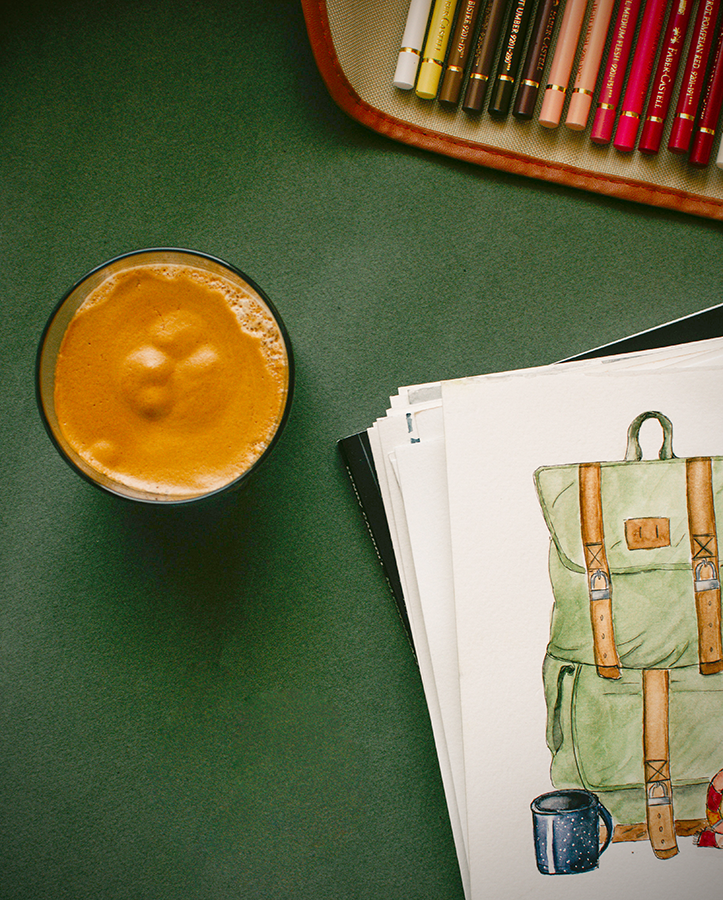
Watercolor Pencils FAQs
Diving into the world of watercolor pencils can be as thrilling as it is mystifying.
Whether you're a seasoned artist or a curious beginner, you've likely encountered a whirlwind of questions about how to best use these versatile tools.
From the right paper to the perfect sharpener, navigating the dos and don'ts can feel like an art form in itself.
Fear not! We've compiled a list of the most frequently asked questions to guide you through the colorful journey of watercolor pencils.
Let's demystify the magic behind these vibrant tools and unlock your creative potential!
Can watercolor pencils be used on regular coloring book pages?
Yes, watercolor pencils can be used dry on regular coloring book pages, much like regular colored pencils. However, to utilize their water-soluble properties, it's best to use them on pages made of watercolor paper.
Do I need to use a special sharpener for watercolor pencils?
It's important to use a high-quality pencil sharpener that is suitable for soft-core pencils to prevent breaking. Some sharpeners are specifically designed for artist-grade pencils and can help maintain a fine point.
How do I prevent the colors from bleeding outside the lines when adding water?
To prevent colors from bleeding, use a light touch when applying water and avoid over-saturating the paper. It's also helpful to work slowly and carefully, building up the water and color gradually.
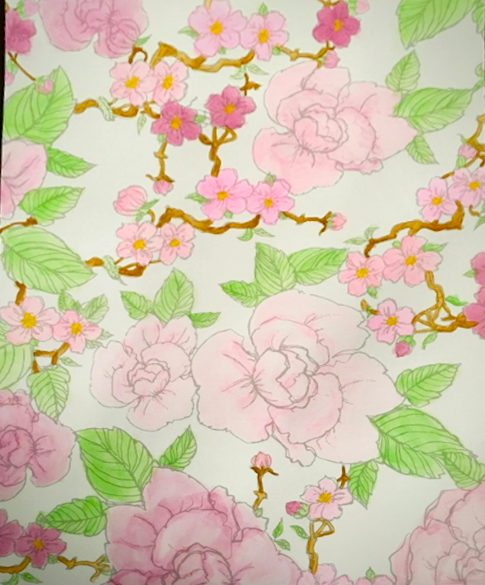
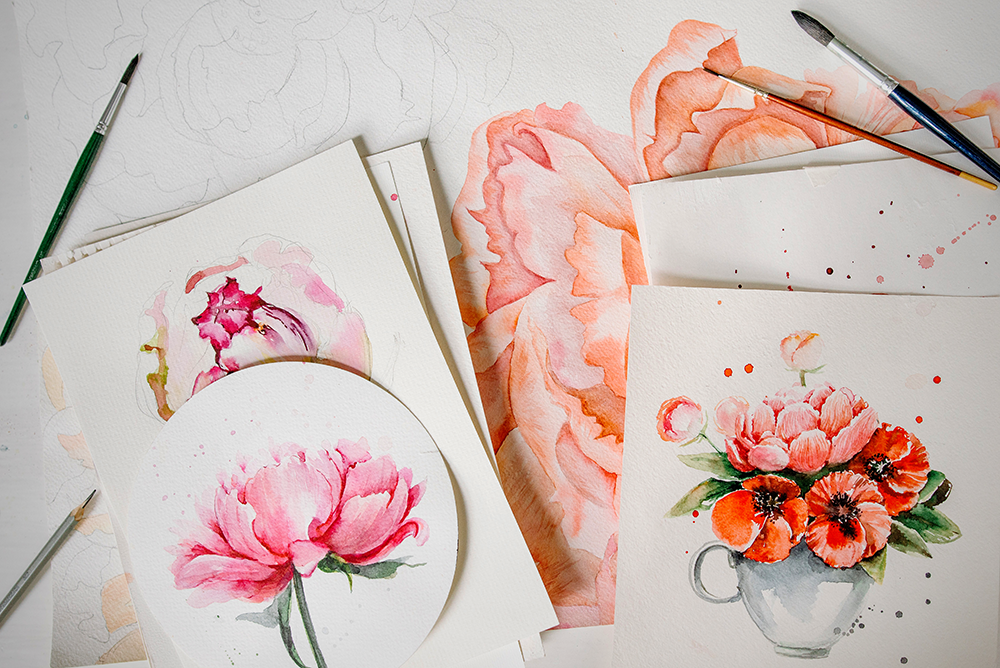
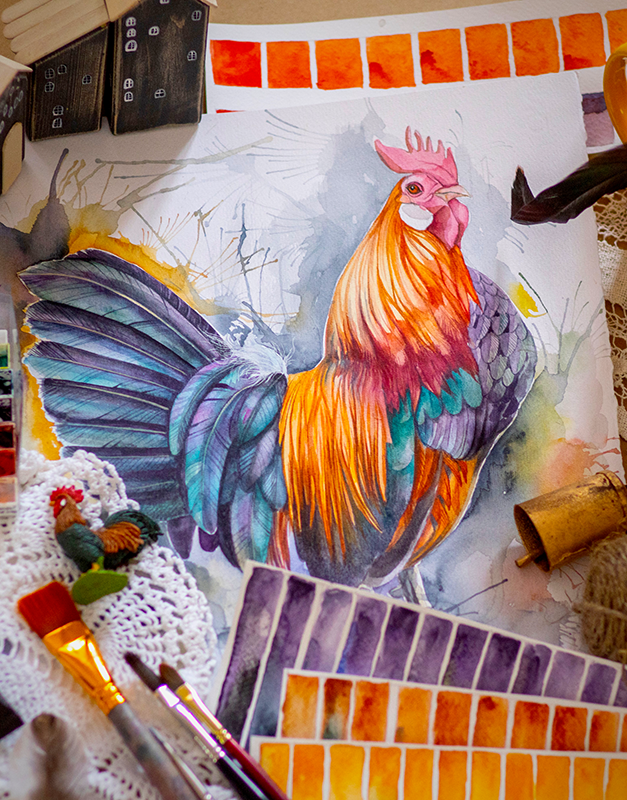
Eager to learn more about watercolor pencils and coloring? Check out Nikolett Delafraye - Illustrator's video!
Want even more content about creativity and art?
Be sure to check out all of our creative chronicles!
Love coloring books and watercolor and want to find your next favorite?
Check out some of our other articles:
-Can you watercolor in coloring books?
-Can you use watercolor pencils in a coloring book?
-How do you make a water coloring book?
-How do I create my own coloring book?
-Is making a coloring book profitable?
